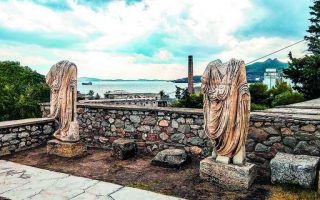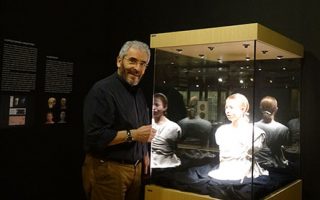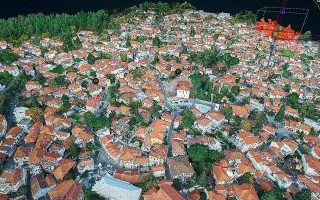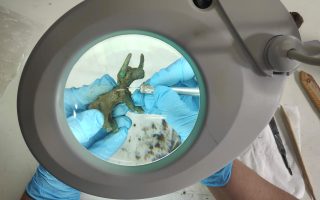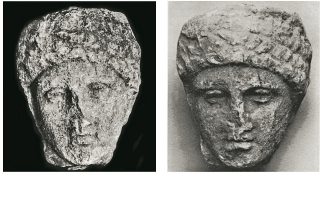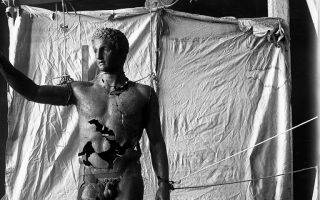The ‘improper burials’ of ancient times
University of Crete archaeologist presents study on the anonymous, unwanted and maligned dead
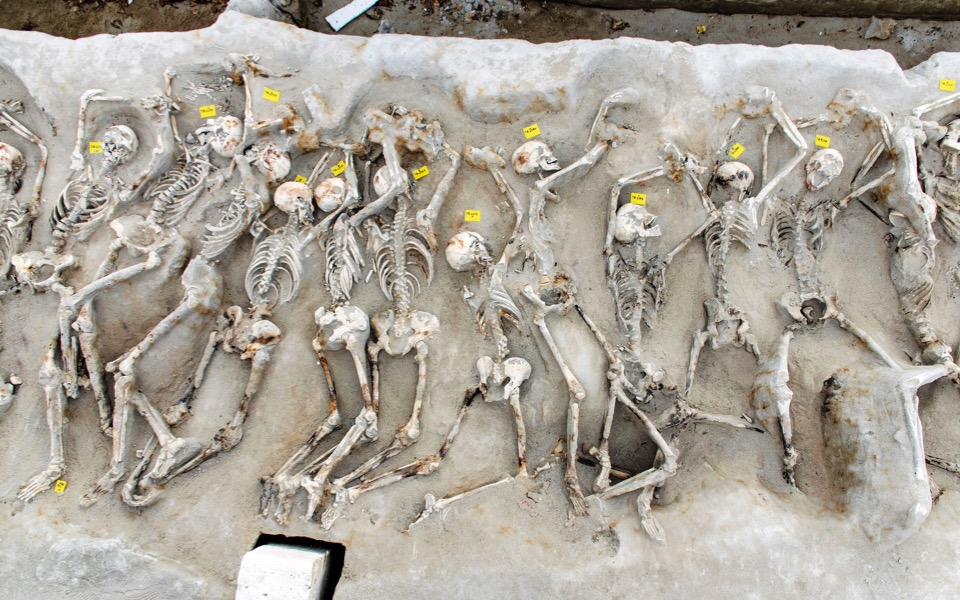
Drone footage released last April of mass graves being dug for thousands of victims of the novel coronavirus in New York shocked the world, but the area of Hart Island, east of the Bronx, has been used as a burial site since 1869 for the unclaimed and the indigent, as well as in the early 1980s for some of the earliest victims of AIDS and in 2008 during an influenza epidemic in the American metropolis.
But mass graves in modern times are not only used to deal with mass casualties of a health crisis, explains Dimitris Bosnakis, an assistant professor of classical archaeology at the University of Crete who recently published a study on burial rituals titled “Gloom and Shame: Humiliated and Despised Dead.”
In a discussion with Kathimerini about his recent study, he also points to the mass graves found in Srebrenica from the 1995 massacre as a modern instance of the practice not related to disease, but also to the dilemma faced by the French authorities when deciding where to bury the perpetrators of the shocking 2015 Bataclan terrorist attack. It had to be in unmarked graves that “could not become sites of pilgrimage,” he says.
His study is not about the burials of the glamorous and famous, but about the “unmourned, unclaimed, infectious dead,” the people societies do not want to remember and the “improper” practices used to dispose of them. It’s about the anonymous victims of pandemics, wars and natural disasters, the deformed and disabled who were tossed like trash into city wells and executed convicts buried in their shackles, like the mass graves found in Faliro in southern Athens during a dig at the Stavros Niarchos Foundation Cultural Center.
What prompted the study?
“For many years we only studied what was good and pure about ancient times. Now it is time to study the darkness too, so we can see it as a whole,” he says.
Bosnakis recommends a new look at the finds and excavations, a dialogue between the disciplines of anthropology, sociology, anthropology and ethnology, with the aim of “exploring obscure and obscured aspects of pre-Christian social systems and possible subterranean bridges with ensuing Christian societies.”
Bosnakis’ study begins in the Iron Age and stretches to the early years of the Roman Empire, across the Hellenistic world. Of all the different cases he studies, those that moved him most were those of children treated like “social rejects and thrown into wells.” Many of the infant skeletons found in Athens wells, he says, had contracted meningitis at birth because the umbilical cord was not severed with a sterilized instrument. Others had birth defects like a cleft-palate or hydrocephaly. “This was, possibly, the toughest part of my research,” he says, adding that dog skeletons were also found along with the remains of children, especially in Ancient Messene.
Not being buried at all was regarded as an even bigger abomination in ancient Greece, a disgrace reserved for traitors, heretics, murderers and tyrants. An inscription on the island of Nisyros from the 3rd century BC, says Bosnakis, dictated that a tyrant or aspiring tyrant was not entitled to a tomb or grave marker and, in the event that such honors were in evidence, they were to be destroyed.
Women were responsible for tending to the dead inside the home; the men took over outdoors. Women were also supposed to leave funerals earlier than men. “Social pressure was applied on women who were potentially sexually active – daughters, brides and young women – as a means of manipulating their behavior and restricting their social interactions,” argues Bosnakis.
A mass grave at Vergina seems to point to some kind of crisis, while another in Delos has all the signs of a homicide. “You could write an ancient detective story on this one,” he says of the burial of a group of shackled women who “were thrown like trash in a gutter near a strange house… apparently killed in some event or during some crime that was covered up.”
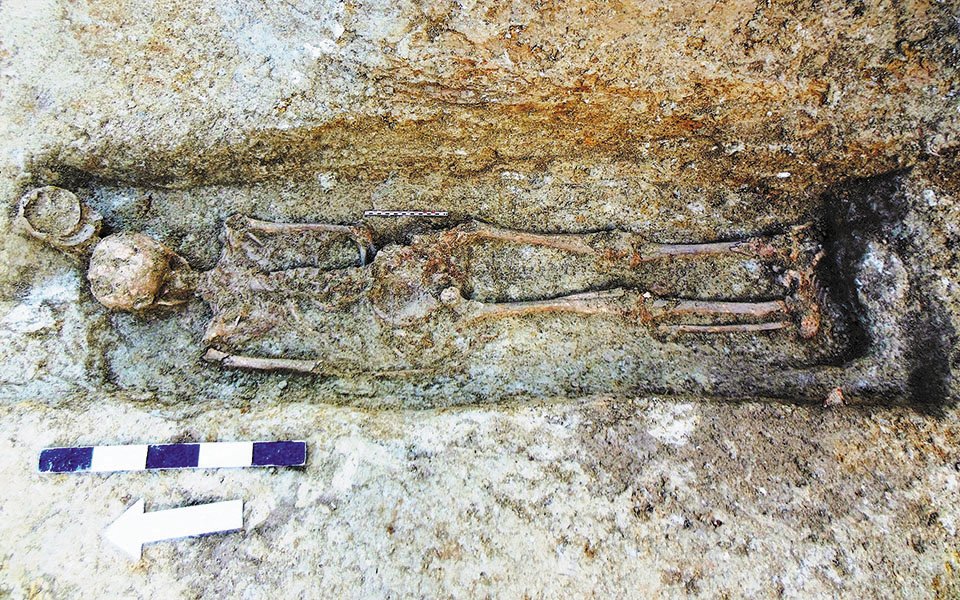
Iraklio, Crete.
Excavations in Faliro in the early 20th century uncovered implements of torture, like a plank used in a similar way to crucifixion. Graves covered in large stones usually pointed to superstition, fear that the dead could rise as demons. Superstitions also seem to have been strong about people who died young.
“The ancient world, and not just modern folklore, is filled with such cases, girls who died virgins, before they were able to fulfill their social role. Societies feared that these unfulfilled girls would be envious of those who had reached completion and would return as demons to prevent them from enjoying it. It was similar to the evil eye,” says Bosnakis.
Individual graves with shackled or manacled skeletons or implements of execution, unusual positions (buried face down or with elbows tied behind their backs), signs of torture and murder point to societies with punitive tendencies, intended mainly as a warning to those seeking to challenge the status quo.
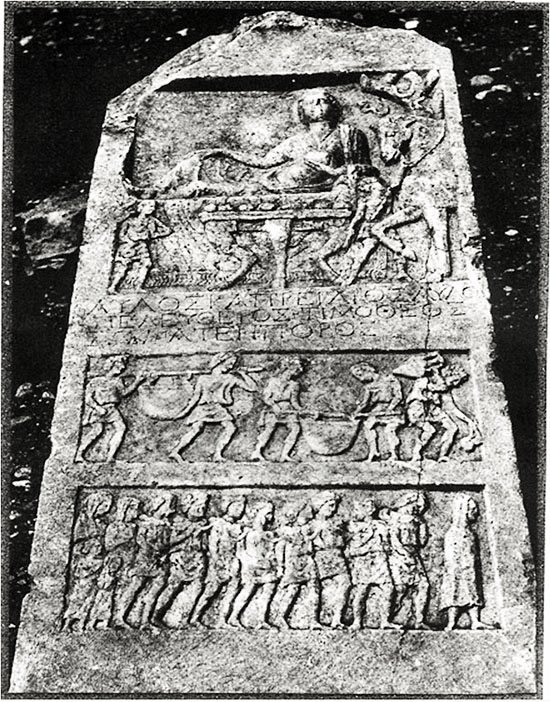
Aulus Caprilius Timothy, from the 1st century AD or
BC, depicting slaves tied to each other by the neck
confirms the existence of a slave trade in Macedonia.
